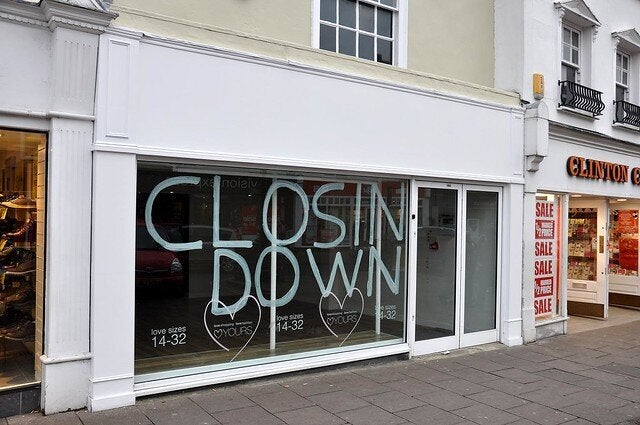
Image Credit: Martin Pettitt
The United Kingdom is often referred to as a nation of shopkeepers, so what shops will this nation of butchers, bakers and candlestick makers have on its high streets in 2030?
Mary Portas produced a report for the government, she believes the complexion of our high streets is changing beyond all recognition with more social and community aspects evolving, but is her view right?
As someone who is both a landlord and a tenant depending on which business I refer to my view is based on personal experience at the cutting edge.
In the 1970s and 80s, long before the web came about and changed our lives in such dramatic fashion, I watched as many of the old corner shops disappeared. These were traditionally shops where the family would live above and would often stay open longer hours as there were always members of the family to serve the local customer base.
People would 'pop over the shop' for a packet of cigarettes or a loaf of bread, often collecting their morning or evening newspaper when they were there. Sweets were a big draw for the local kids who would call in on the way to and from school, buying such things as penny chews or gobstoppers. Chewing gum was a big favourite and would often include cards of football teams which evolved into a collection.
These shops would often offer credit to customers who they knew well 'running a tab' as it was called, and allowing customers to settle up when they got paid at the end of the week.
Clearly the closure of this type of enterprise created a loss of community and in my opinion was the start of the changes in high street retailing we see today.
We now live in a world where many people do not know their next door neighbour let alone a corner shop owner, often having more in common, and certainly more interaction, with someone living hundreds or even thousands of miles away, through the medium of the internet or their smart phone.
In those days it was possible to pull up in your Ford Anglia or Humber Sceptre and nip into the newsagent to buy some cigarettes or lemonade before driving off to the local cinema to watch the latest movie. There were few yellow lines to stop you or parking wardens lurking in the shadow of the Co-op waiting to pounce before gleefully putting a £30 ticket on your car.
As time went on and parking restrictions became more onerous people started visiting the new supermarkets which were then mostly located on the high street where they could buy their shopping under one roof. Credit cards replaced the old tab system used by retailers up until about 1985, which enabled the new holders of such cards to shop where they liked. One of the first credit cards I ever used was called Access which many of my older readers will remember.
So what now for this nation of shopkeepers? Well, I am not optimistic that the high street will exist in 2030 as it does today any more than I was that those family corner shops in the 1970s & 80s could survive the arrival of the car and large supermarkets. These days, the threat is more arduous in the form of the shopping mall and of course, most importantly, the internet.
As more and more of us seek ways to cope with increasingly busy lifestyles we will seek ways to automate or make easier the mundane tasks we face such as food shopping or even gift shopping while the retailers that sell us these goods look for ways to cut fixed overheads such as retail rates & staff. I see this process accelerating to a lightning pace and am doubtful the high street can survive in its present form.
I see our high streets containing more houses, apartments, betting offices, hairdressing salons, coffee shops and restaurants rather than butchers, bakers and candlestick makers.
